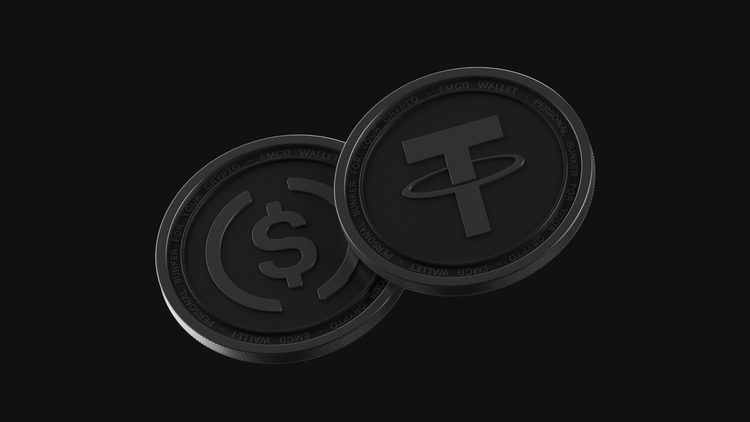Difference Between Crypto Indices and Traditional Financial Indices

In finance, indices work as a compass. They show what the market is doing, how assets perform, and where the next opportunity might be. With the rise of digital assets, a new category has appeared, the crypto index. To understand this shift, let’s look at the difference between crypto and traditional indices, their structure, and how they work for a modern investor.
What Is a Crypto Index Fund
A crypto index fund operates as a portfolio of cryptocurrencies such as Bitcoin and Ethereum. Instead of tracking company shares, it follows the performance of blockchain assets.
For example, EMCD is preparing an Index product that will rebalance holdings automatically according to price movement and trading frequency, helping users invest with balance and simplicity.
Traditional index funds depend on the stock exchange schedule and regulatory rules. Crypto indices, by contrast, function 24/7, reflecting every price change in real time. That makes them more dynamic, and often more volatile, than their stock-based equivalents.
Crypto Index vs Stock Index
Comparing these two benchmarks reveals structural and operational gaps. Both track asset groups, yet their composition and logic are completely different.
| Parameter | Traditional Financial Indices | Crypto Indices |
| Asset Classes | Stocks, bonds, and mutual funds | Digital assets like Bitcoin and altcoins |
| Trading Hours | Fixed exchange schedule | 24/7 trading without interruption |
| Rebalancing Frequency | Quarterly or annually | Weekly or algorithmic, depending on data |
| Volatility | Moderate and predictable | Highly volatile, influenced by sentiment |
| Liquidity | Driven by institutional investors | Defined by token demand and network activity |
| Access | Through brokers and custodians | Through crypto wallets and platforms |
| Regulation | Centralized and legal-bound | Decentralized, based on compliance standards |
| Scope | National or regional | Global, borderless, user-driven |
These key differences show why crypto markets move faster, but also why they demand stronger data analysis and risk control.
Structural and Operational Differences
From a structural point of view, stock indices rarely change. Companies stay listed for years unless they merge or collapse.
Crypto indices, however, are rebuilt regularly because projects can rise or fall in months. This flexibility keeps them aligned with innovation but adds complexity.
EMCD’s Index will rely on insights from existing products, Wallet, Coinhold, P2P, and Mining Pool. Together, they create a system where digital assets can be stored securely, converted easily, and managed transparently. Users can track the cryptocurrency performance they hold while benefiting from integrated services in one ecosystem.
How Frequency and Volatility Affect Value
Frequency and volatility define how an index behaves. Traditional markets rebalance quarterly, but crypto operates continuously. This makes changes faster and sometimes sharper.
Frequent updates mean more responsive risk management but also higher sensitivity to news and liquidity shifts. That’s why EMCD applies cautious, data-based adjustments instead of relying solely on speculation. The result is a system that is still flexible but more predictable than unmanaged exposure.
What Drives the Market
- Traditional indices rely on company profits, dividends, and macroeconomic trends
- Crypto indices depend on the technology layer, adoption rates, and network demand
In short, the cryptocurrency market prices progress, not profit. EMCD’s upcoming tools will reflect this mindset, combining technical fundamentals with financial discipline, ensuring portfolios evolve alongside the ecosystem itself.
Why People Invest in Indices
Investors choose indices to simplify decision-making. Instead of managing many positions, they hold one diversified asset. In crypto, indices add an extra layer of transparency because every move can be tracked on-chain.
With EMCD, users can invest in digital assets using simple, reliable tools
- EMCD Wallet helps store and manage coins safely
- Coinhold rewards users daily without complex staking
- Mining Pool lets users generate crypto directly and later allocate it efficiently
- P2P enables fast exchanges within the community, connecting traders directly
Together, these products form a complete infrastructure where investing, storing, and earning happen in one ecosystem, an advantage few platforms offer.
Key Pros and Limitations
Advantages
- 24/7 access and higher frequency of updates
- Transparency and open data
- Easier diversification across digital assets
- Integration within EMCD tools
Limitations
- More volatile than traditional markets
- Lack of universal regulation
- Dependence on the technology performance
Even with these risks, crypto indices are becoming essential for investors who seek more flexibility and insight in modern finance.
The Future of Crypto Benchmarks
The evolution of indices will merge traditional finance with blockchain infrastructure. As both markets grow closer, investors will use hybrid tools to measure and manage performance across asset classes.
EMCD’s future Index reflects that path, combining mining data, daily rewards, and real-time analytics for a more inclusive view of digital value.
Summary
Traditional benchmarks measure stability and profit, while crypto indices measure innovation and participation.
EMCD’s ecosystem, Wallet, Coinhold, Mining Pool, and P2P, makes this evolution accessible and transparent.
It’s where technology meets trust, and where the cryptocurrency market finally finds structure in constant motion.




